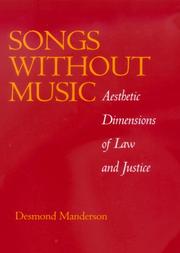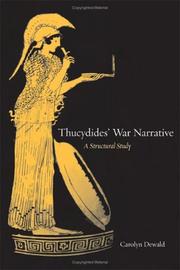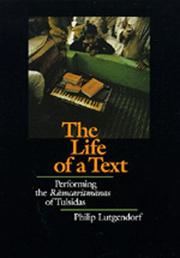| Listing 1 - 10 of 14 | << page >> |
Sort by
|
Book
Year: 2019 Publisher: Hamburg Hamburg University Press
Abstract | Keywords | Export | Availability | Bookmark
 Loading...
Loading...Choose an application
- Reference Manager
- EndNote
- RefWorks (Direct export to RefWorks)
This book investigates the narrative properties of the 19th-century verse novel. The genre grew out of Lord Byron’s Don Juan and established itself in various European literatures, with famous examples such as Pushkin’s Eugene Onegin. The proposed analysis is unique in the existing literature in defining the genre based on formal properties and in examining its exceptional, reflexive structure in detail. Apart from 19th-century texts, verse novels from contemporary literature are also includ-ed, and thus the connection between these two contexts is discussed for the first time extensively.
Fiction --- History and criticism. --- Byron --- Genre theory --- Reflexivity --- Romanticism --- Narrative structure --- Verse novel
Book
Year: 2019 Publisher: Hamburg Hamburg University Press
Abstract | Keywords | Export | Availability | Bookmark
 Loading...
Loading...Choose an application
- Reference Manager
- EndNote
- RefWorks (Direct export to RefWorks)
This book investigates the narrative properties of the 19th-century verse novel. The genre grew out of Lord Byron’s Don Juan and established itself in various European literatures, with famous examples such as Pushkin’s Eugene Onegin. The proposed analysis is unique in the existing literature in defining the genre based on formal properties and in examining its exceptional, reflexive structure in detail. Apart from 19th-century texts, verse novels from contemporary literature are also includ-ed, and thus the connection between these two contexts is discussed for the first time extensively.
Fiction --- History and criticism. --- Byron --- Genre theory --- Reflexivity --- Romanticism --- Narrative structure --- Verse novel
Dissertation
Year: 2024 Publisher: Liège Université de Liège (ULiège)
Abstract | Keywords | Export | Availability | Bookmark
 Loading...
Loading...Choose an application
- Reference Manager
- EndNote
- RefWorks (Direct export to RefWorks)
This thesis explores the long-term retention of elements in storytelling advertising, focusing on how various narrative components—such as characters, plot, settings, brand messages, and brand integrations—are recalled over time. Through a qualitative longitudinal study, participants were exposed to selected advertisements and interviewed immediately after viewing, one week later, and one month later to assess recall dynamics. The findings reveal that messages, particularly explicit ones, exhibit the least memory decay, demonstrating a strong associative power that helps them remain salient in consumers' minds. Brand heritage, especially when integrated deeply into the narrative, also showed significant retention, further emphasizing the importance of storytelling in brand communication. Main characters were consistently recalled due to their central role and emotional connection with viewers, while settings and certain plot elements experienced greater memory decay, particularly when they were less emotionally engaging. The pointed reasons for high levels of retention in certain elements were due to being emotionally impactful, central to the narrative, and associative with the other elements. The findings offer both practical insights for marketers aiming to optimize their narrative strategies and theoretical contributions to the understanding of memory retention in narrative advertising.
Book
ISBN: 0710072503 Year: 1972 Publisher: London : Routledge and Kegan Paul,
Abstract | Keywords | Export | Availability | Bookmark
 Loading...
Loading...Choose an application
- Reference Manager
- EndNote
- RefWorks (Direct export to RefWorks)
CHAUCER (GEOFFREY), d. 1400 --- CANTERBURY TALES --- CHAUCER (GEOFFREY), d. 1400 --- KNIGHT'S TALE --- NARRATIVE STRUCTURE --- CHAUCER (GEOFFREY), d. 1400 --- RELIGIOUS POETRY --- CANTERBURY TALES --- KNIGHT'S TALE --- RELIGIOUS POETRY --- CHAUCER (GEOFFREY), d. 1400 --- CANTERBURY TALES --- CHAUCER (GEOFFREY), d. 1400 --- KNIGHT'S TALE --- NARRATIVE STRUCTURE --- CHAUCER (GEOFFREY), d. 1400 --- RELIGIOUS POETRY --- CANTERBURY TALES --- NARRATIVE STRUCTURE --- KNIGHT'S TALE --- RELIGIOUS POETRY

ISBN: 128275873X 9786612758737 0520922212 1597349062 9780520922211 0585389837 9780585389837 9780520216884 0520216881 9781597349062 0520216881 9781282758735 6612758732 Year: 2000 Publisher: Berkeley, Calif. University of California Press
Abstract | Keywords | Export | Availability | Bookmark
 Loading...
Loading...Choose an application
- Reference Manager
- EndNote
- RefWorks (Direct export to RefWorks)
In this pathbreaking and provocative analysis of the aesthetics of law, the historian, legal theorist, and musician Desmond Manderson argues that by treating a text, legal or otherwise, as if it were merely a sequence of logical propositions, readers miss its formal and symbolic meanings. Creatively using music as a model, he demonstrates that law is not a sterile, rational structure, but a cultural form to be valued and enhanced through rhetoric and metaphors, form, images, and symbols. To further develop this argument, the book is divided into chapters, each of which is based on a different musical form. Law, for Manderson, should strive for neither coherence nor integrity. Rather, it is imperfectly realized, constantly reinterpreted, and always in flux. Songs without Music is written in an original, engaging, and often humorous style, and exhibits a deep knowledge of both law and music. It successfully traverses several disciplines and builds an original and persuasive argument for a legal aesthetic. The book will appeal to a broad readership in law, political theory, literary criticism, and cultural studies.
Law and aesthetics. --- Aesthetics and law --- Aesthetics --- aesthetics. --- argument. --- argumentation. --- composition. --- creative nonfiction. --- cultural studies. --- form. --- justice. --- law. --- legal argument. --- legal brief. --- legal interpretation. --- legal precedence. --- legal text. --- legal writing. --- literary criticism. --- living constitution. --- living law. --- metaphor. --- music theory. --- music. --- musical forms. --- narrative structure. --- narrative theory. --- nonfiction. --- philosophy. --- political theory. --- rhetoric. --- symbolism. --- text. --- writing.
Book
ISBN: 022626808X 9780226268088 9780226267890 9780226267920 Year: 2015 Publisher: Chicago
Abstract | Keywords | Export | Availability | Bookmark
 Loading...
Loading...Choose an application
- Reference Manager
- EndNote
- RefWorks (Direct export to RefWorks)
We are living through a boom in autobiographical writing. Every half-famous celebrity, every politician, every sports hero-even the non-famous, nowadays, pour out pages and pages, Facebook post after Facebook post, about themselves. Literary theorists have noticed, as the genres of "creative nonfiction" and "life writing" have found their purchase in the academy. And of course psychologists have long been interested in self-disclosure. But where have the philosophers been? With this volume, Christopher Cowley brings them into the conversation. Cowley and his contributors show that while philosophers have seemed uninterested in autobiography, they have actually long been preoccupied with many of its conceptual elements, issues such as the nature of the self, the problems of interpretation and understanding, the paradoxes of self-deception, and the meaning and narrative structure of human life. But rarely have philosophers brought these together into an overarching question about what it means to tell one's life story or understand another's. Tackling these questions, the contributors explore the relationship between autobiography and literature; between story-telling, knowledge, and agency; and between the past and the present, along the way engaging such issues as autobiographical ethics and the duty of writing. The result bridges long-standing debates and illuminates fascinating new philosophical and literary issues.
Autobiography --- Autobiography in literature. --- Autobiographical fiction. --- Philosophers --- Philosophy. --- Authorship. --- autobiography, biography, celebrity, fame, authorship, creative nonfiction, life writing, self disclosure, interpretation, understanding, deception, delusion, narrative structure, literature, storytelling, knowledge, agency, memoir, memory, past, ethics, simone de beauvoir, fraud, truth, honesty, obscurity, exposure, stanley cavell, characters.
Book
ISBN: 1501741616 Year: 2021 Publisher: Ithaca, NY : Cornell University Press,
Abstract | Keywords | Export | Availability | Bookmark
 Loading...
Loading...Choose an application
- Reference Manager
- EndNote
- RefWorks (Direct export to RefWorks)
"For the specialist in the study of narrative structure, this is a solid and very perceptive exploration of the issues salient to the telling of a story—whatever the medium. Chatman, whose approach here is at once dualist and structuralist, divides his subject into the 'what' of the narrative (Story) and the 'way' (Discourse). Chatman's command of his material is impressive."—Library Journal
Narrative Structure in Fiction and Film. --- Narrative Structure in Fiction. --- Narrative Structure in Film. --- Roland Barthes. --- art of storytelling. --- character analysis. --- character writing. --- creating a character . --- creative writing. --- different narrators. --- discourse. --- elements of storytelling. --- ethos. --- film writing. --- form of content. --- form of expression. --- how to begin writing. --- how to tell a story. --- how to write a character. --- how to write a film. --- how to write a movie. --- how to write a novel. --- how to write a story. --- how to write character traits. --- how to write plot. --- how to write point of view. --- how to write setting. --- how to write suspense. --- introduction to writing. --- linguistics and semiotics. --- literary criticism. --- literary theory. --- movie criticism. --- movie writing. --- narratee. --- narration in the fiction film. --- narration. --- narrative and poetics. --- narrative discourse. --- narrative fiction. --- narrative inference. --- narrative motivation. --- narrative structure. --- narrative studies. --- narrative theory. --- narrativeology. --- narratology. --- narrators. --- reading for the plot. --- rhetoric of fiction. --- rhetoric. --- storytelling. --- substance of content. --- substance of expression. --- theory of literature. --- theory of plot. --- types of plots. --- typology of plot. --- what are different styles of stories. --- what is a plot. --- what is setting.
Book
ISBN: 0520341015 Year: 1982 Publisher: Berkeley, CA : University of California Press,
Abstract | Keywords | Export | Availability | Bookmark
 Loading...
Loading...Choose an application
- Reference Manager
- EndNote
- RefWorks (Direct export to RefWorks)
Feud stands at the core of the Old Icelandic sagas. Jesse Byock shows how the dominant concern of medieval Icelandic society--the channeling of violence into accepted patterns of feud and the regulation of conflict--is reflected in the narrative of the family sagas and the Sturlunga saga compilation. This comprehensive study of narrative structure demonstrates that the sagas are complex expressions of medieval social thought.
advocacy. --- arbitration. --- brokerage. --- conflict. --- direct resolution. --- family sagas. --- feud chains. --- feud clusters. --- feud. --- feudeme. --- folklore. --- goading. --- iceland. --- icelandic literature. --- information passing. --- medieval icelandic society. --- medieval social thought. --- medieval. --- mythology. --- narrative structure. --- old icelandic saga. --- regulation of conflict. --- rejected resolution. --- resolution. --- scandinavia. --- scandinavian literature. --- self advocacy. --- sturlunga saga compilation. --- travel. --- violence.

ISBN: 9786612357473 1282357476 0520930975 159875940X 9780520930971 1423745442 9781423745440 9781282357471 9780520241275 0520241274 Year: 2005 Publisher: Berkeley, Calif. University of California Press
Abstract | Keywords | Export | Availability | Bookmark
 Loading...
Loading...Choose an application
- Reference Manager
- EndNote
- RefWorks (Direct export to RefWorks)
As a sustained analysis of the connections between narrative structure and meaning in the History of the Peloponnesian War, Carolyn Dewald's study revolves around a curious aspect of Thucydides' work: the first ten years of the war's history are formed on principles quite different from those shaping the years that follow. Although aspects of this change in style have been recognized in previous scholarship, Dewald has rigorously analyzed how its various elements are structured, used, and related to each other. Her study argues that these changes in style and organization reflect how Thucydides' own understanding of the war changed over time. Throughout, however, the History's narrative structure bears witness to Thucydides' dialogic efforts to depict the complexities of rational choice and behavior on the part of the war's combatants, as well as his own authorial interest in accuracy of representation. In her introduction and conclusion, Dewald explores some ways in which details of style and narrative structure are central to the larger theoretical issue of history's ability to meaningfully represent the past. She also surveys changes in historiography in the past quarter-century and considers how Thucydidean scholarship has reflected and responded to larger cultural trends.
HISTORY / Ancient / General. --- Thucydides. --- Greece --- History --- Historiography. --- Thucydides. -- History of the Peloponnesian War.. --- Greece -- History -- Peloponnesian War, 431-404 B.C.. --- Greece -- History -- Peloponnesian War, 431-404 B.C. -- Historiography. --- aegean war. --- alcibiades. --- ancient greece. --- archidamian. --- argos. --- athens. --- brasidas. --- chios. --- classical history. --- classical studies. --- community. --- delos. --- diplomacy. --- heroes. --- historiography. --- history. --- interregnum. --- ionia. --- lacedaemonians. --- locrian. --- melos. --- military history. --- military. --- narrative structure. --- narrative technique. --- narrative theory. --- narrative. --- nonfiction. --- peace. --- peloponnesian war. --- sicily. --- thucydides. --- unit of action. --- war. --- warriors.

ISBN: 0520066901 9786612355530 0520909348 1282355538 0585131074 Year: 1991 Publisher: Berkeley, CA : University of California Press,
Abstract | Keywords | Export | Availability | Bookmark
 Loading...
Loading...Choose an application
- Reference Manager
- EndNote
- RefWorks (Direct export to RefWorks)
The Life of a Text offers a vivid portrait of one community's interaction with its favorite text-the epic Ramcaritmanas-and the way in which performances of the epic function as a flexible and evolving medium for cultural expression. Anthropologists, historians of religion, and readers interested in the culture of North India and the performance arts will find breadth of subject, careful scholarship, and engaging presentation in this unique and beautifully illustrated examination of Hindi culture. The most popular and influential text of Hindi-speaking North India, the epic Ramcaritmanas is a sixteenth century retelling of the Ramayana story by the poet Tulsidas. This masterpiece of pre-modern Hindi literature has always reached its largely illiterate audiences primarily through oral performance including ceremonial recitation, folksinging, oral exegesis, and theatrical representation. Drawing on fieldwork in Banaras, Lutgendorf breaks new ground by capturing the range of performance techniques in vivid detail and tracing the impact of the epic in its contemporary cultural context.
Criticism, Textual. --- Tulasidasa,-- 1532-1623.-- Ramacaritamanasa. --- Criticism, Textual --- Languages & Literatures --- Indo-Iranian Languages & Literatures --- Tulasīdāsa, --- Stage history. --- Textual criticism --- Tulsī Dās, --- Dās, Tulasī, --- Gōsvāmī Tulasīdāsa, --- Gosvāmī, Tulsīdās, --- Gosvāmī Tulsīdās, --- Tulsidas, --- Tulasī Dāsa, --- Editing --- Epic poetry, Greek Criticism, Textual --- adaptation. --- anthropology. --- banaras. --- community. --- contemporary production. --- cross cultural. --- drama. --- epic poetry. --- epic. --- folklore. --- gods and goddesses. --- hindi literature. --- hinduism. --- india. --- indian literature. --- katha. --- meter. --- multicultural. --- narrative structure. --- nonfiction. --- northern india. --- oral tradition. --- performing arts. --- ramayana. --- ramcaritmanas. --- ramlila. --- recitation. --- religion. --- religious experience. --- religious poetry. --- religious tradition. --- ritual. --- sacred texts. --- song. --- theater. --- tradition. --- tulsidas. --- world religions.
| Listing 1 - 10 of 14 | << page >> |
Sort by
|

 Search
Search Feedback
Feedback About UniCat
About UniCat  Help
Help News
News